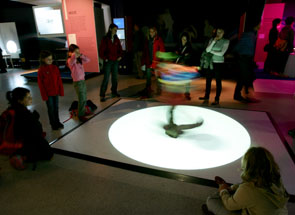|
|
 |
 |

|
 |
 |
Move
Andrew Hieronymi (CH)
Computer games suffer from a generally bad image: they’re said to turn kids into “desk potatoes” whose fingers are all that get a workout. “Move” takes a novel approach—it calls for agility and getting the player’s whole body into the game.
Source: rubra
Cross-reference: The right to reprint is reserved for the press; no royalties will be due only with proper copyright attribution.
 download
printversion download
printversion
 back
back
|
 |
|